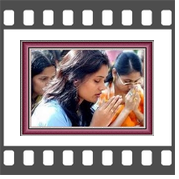Main menu:
KIDZ CARE PLAY SCHOOL
Sarswati Pooja
Photo Gallery

























Saraswati Puja
Saraswati Puja is celebrated all over India by Hindus. Saraswati is the goddess for Education, Arts and Crafts. This festival is held in the month of Magh (January-February). It is a festival celebrated by the youth, particularly students who invoke the blessings of the goddess for success in learning, arts and crafts. More than any other state, Saraswati Puja is celebrated in West Bengal in a splen did manner. Next to West Bengal it is celebrated in southern states of India such as Tamil Nadu, Kerala and Andhra Pradesh etc. in schools, colleges and homes. Saraswati Pooja is celebrated as Basant Punjami OR Vasanat Punjami in many states of India.
Bakdevi, Biraj, Sarada, Brahmi, Satarupa, Mahasweta, Sarbasukia, Prithudar, Bagiswari are some of the other names of Goddess Saraswati.
Myths of Goddess Saraswati Amongst all the Hindu deities, Saraswati stands out as the most controversial. Starting from the Vedas, Puranas, Upanishads to the popular ancient mythology, Saraswati appears through a veil of mystery. According to the Matsya Purana, Saraswati evolved from the mouth of Brahma. Such was her beauty and grace that Brahma pursued her. As she fled in different directions a head appeared and so Brahma is attributed with five heads, she was the most unique creation of Brahma.
Methods for Saraswati Puja to worship Goddess Saraswati The idol is decorated in white, representing purity. The place where the idol is kept for the Pooja is decorated with floral designs or Rangolois and the design of a fish is considered auspicious. Although different states of India follow different methods to follow, following is the method of worship commonly followed by majority of the Indian people:Family members bathe early and dress in yellow attire and assemble in front of the Goddess. A flat low stool made of wood is covered with yellow cloth and the idol is placed on it, facing East direction. Then, the face of the idol remains covered till the priest begins chanting the mantras at the commencement of the puja.
A green coconut is placed on an earthen pot with a red checked cotton cloth called Gamcha. The actual puja flowers are used but the most significant is the Palash or flame of the forest and marigold flowers. In the southern part of the country, Lotus and other fragrant flowers like jasmine are offered.
Books of the students at home are placed before the goddess.
The main pooja offerings to the goddess are mainly fruits; most significant are Berries from the wild plum tree. Other fruits include tapioca. Sweets include puffed rice, jaggery and yogurt. The earthen pot is tied with a string which will be untied only on the next day by the priest before Bisarjan or the immersion ceremony.
A Havan (hymn) is done by the priest (or the eldest among the family) using special wood, ghee, joss sticks and incense. There absence of a burnt smell signifies the success of the puja. A diya or lamp is also kept lit along with the prasad.
Arati is performed by the person in the morning and again in the evening. This is done while chanting sanskrit slokas (in brahmans house) or slokas from the regional language in non-brahmans houses) and accompanied by the blowing of conch shells and the beating of drums (in northern India or holy pooja-bell in southern India).
The lit lamp used during the Arati is passed around for each devotee to warm their hand and touch their heads.
The most significant part of the Saraswati Puja is, nobody touches books on that particular day. This signifies that the goddess is blessing the books placed in front of her that day.
Eating vegetarian food is strictly followed on this day of Saraswati Pooja. Young Kids in the family are asked to write for the first time in life, the alphabets by the priest / family elder. It suggests the first step being taken in the acquisition of Knowledge.
The next day the children take back their books but stand before the goddess and read from them or write in them.
Many people visit temple on that day, to worship God Saraswathi to get her blessing to get Best of Education / Art / Culture.